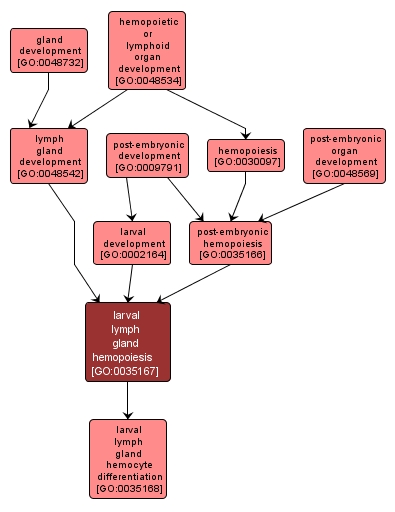GO TERM SUMMARY
|
| Name: |
larval lymph gland hemopoiesis |
| Acc: |
GO:0035167 |
| Aspect: |
Biological Process |
| Desc: |
The production of blood cells from the larval lymph gland. The lymph gland consists of three to six bilaterally paired lobes that are attached to the cardioblasts during larval stages, and it degenerates during pupal stages. |
Synonyms:
- larval lymph gland haematopoiesis
- larval lymph gland hematopoiesis
- larval lymph gland haemopoiesis
|
|

|
INTERACTIVE GO GRAPH
|














